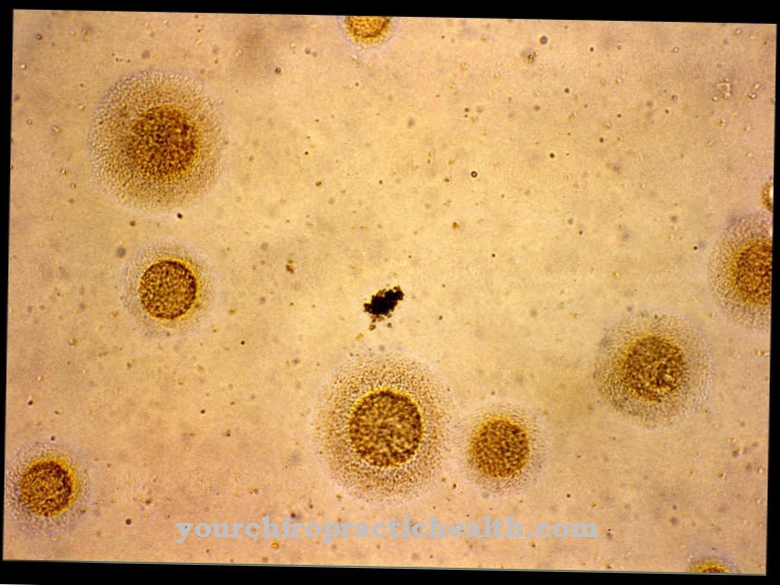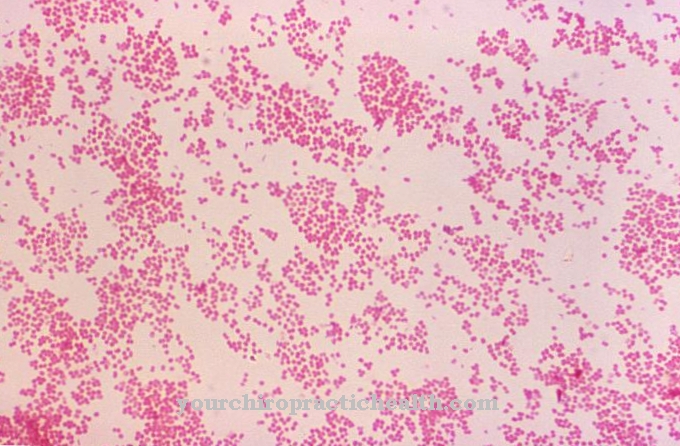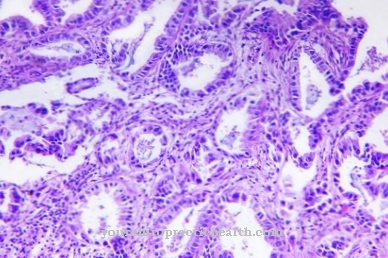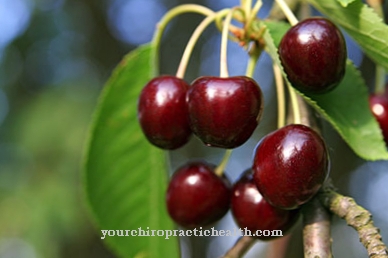Under the term Aspergillus about 350 types of mold are summarized, which are characterized by spore carriers reminiscent of an Aspergillus. Molds of this type often form so-called fungal lawns with different colors from milky-white to greenish-gray, red, brown and yellowish to black. A few of the worldwide widespread and almost ubiquitous Aspergillus species produce mycotoxins that are very toxic to humans or they cause so-called aspergillosis.
What is Aspergillus?
Aspergillus, too Watering can mold called, includes around 350 different types of mold. Its name is derived from the Aspergill, the lithurgical device with which holy water is sprinkled in the Catholic Church. The designation watering can mold is also derived from the shape of the nozzle of a watering can, because under the light microscope the conidia carriers (conidiophores) typical of Aspergillus species are reminiscent of the Aspergillus and the watering can nozzle.
The conidia are formed in a vegetative way, but it is now recognized that many Aspergillus species also have a type of sexual reproduction and that sexual and asexual reproduction can alternate. Like most other types of fungus, watering can molds live as saprobionts on dead organic matter. Their special feature is to secrete acids and enzymes that can break down macromolecules of the dead organic material. Only then do they take the substances that have already been broken down, e.g. B. peptides, amino acids and lipids, with their hyphae. Long-chain molecules are split up practically before they are taken up by the hyphae.
While a few types produce very poisonous mycotoxins and other types can cause aspergillosis as pathogenic germs, there are also some types that, as noble molds, make positive and important contributions to food production.
Occurrence, Distribution & Properties
The overwhelming majority of the 350 known Aspergillus species live completely inconspicuously as saprobionts and make an important contribution to the utilization of dead organic material that they metabolize. The distribution area of the watering can mushrooms is practically ubiquitous.
A problem with regard to the health of humans exists with a few species, which practically act as food competitors and which can colonize, spoil and poison human (organic) food. Warm and humid habitats are particularly at risk.
The species Aspergillus flavus and Aspergillus niger, also known as black mold, for example, produce highly toxic aflatoxins and can cause aspergillosis if the immune system is weak. In the case of Aspergillus niger, various organs such as skin and nails can be affected. There is always a higher risk of infection in organs that have small, scarred cavities, for example from previous illnesses, in which Aspergillus can implant.
Aspergillus fumigatus, which is often involved in causing aspergillosis, has also proven to be infectious. Immunosuppressed and HIV-infected people are particularly at risk, as they can only counteract the fungal infection with their own defenses. Invasive aspergillosis, which can also affect the central nervous system, usually has a very poor prognosis.
Those Aspergillus species that are associated with the synthesis of mycotoxins are usually also known to be possible triggers for allergic reactions.
Meaning & function
Not all pathogenic Aspergillus species are exclusively harmful to humans. Aspergillus niger, which can be recognized in its appearance by its black spores and, in the form of aspergillosis, can even affect hair and nails, can also be used positively. The chemical and pharmaceutical industries use the metabolic ability of black mold in large-scale plants to produce certain enzymes and organic acids such as citric acid and tartaric acid. Aspergillus melleus is "bred" by the pharmaceutical industry for the large-scale production of various enzymes such as proteinases, acylases and hydrolases.
Another group of watering can mushrooms and some types of penicillin are not pathogenic, but are valued and needed as refiners of food. The various types of blue cheese such as Roquefort, Gorgonzola and Stilton are known. Edible mushroom cultures are also required for the production of various types of sausage and ham. The noble mushrooms give the food the desired taste and keep "foreign" molds away that would spoil the food. The useful molds are therefore not only required to improve the taste through enzymes and other material conversions, but also serve to preserve the food. For example, Aspergillus oryzae is used to make soy sauce.
Illnesses & ailments
It is easy to protect yourself against the toxins of some typical Aspergillus species, as the affected food can already be recognized by its mold, rot or unpleasant smell. If mold growth can already be seen, it can be assumed that large parts of the moldy food are already permeated by fungal hyphae, since the process of spreading takes place before the fruiting bodies and their conidia or spores are visible. For example, jam that is in a jar and shows visible mold on the surface is no longer suitable for consumption for safety reasons.
While you can protect yourself from the toxins and allergenic substances of watering can fungi by paying attention and by following a few precautionary measures, effective protection against inhaling spores or conidia of fungi is practically impossible, as the tiny spores are almost ubiquitous in normal air .
Normally this is not a problem for an intact human immune system, because there are enough defense mechanisms to keep the pathogenic germs in check. However, the risk of developing aspergillosis or allergic reactions from inhaled Aspergillus spores increases significantly if the immune system is impaired by an underlying disease such as AIDS, artificial immunosuppression or the flu.





.jpg)


.jpg)





.jpg)






.jpg)






